Last week I visited the recently opened Section 2 of the
High Line. It was a warm midday, not as hot as opening day, making it good weather for a stroll from 21st Street (where it melds with Section 1) to its terminus at 30th Street. For those not familiar with the High Line, see
my post on the first section that opened in 2009, also recommended for seeing the progression and continuity from the Gansevoort Street entry to its current extents near Hudson Yards. Below are my impressions on Section 2, the text typically referring to the photo directly above it.
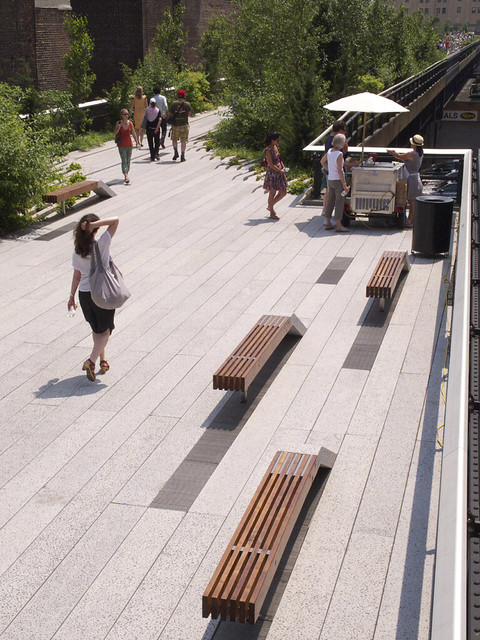
Before the opening of Section 2 last week, fence demarcated the split between it and the first section to the south. Now that the two are linked together, the transition is seamless; the Chelsea Grasslands moves subtly into the Chelsea Thicket. (Reference
this map for locations of the various areas along the High Line.) Continuity is also found in the paving and the benches that rise from it. The above photo is taken from the 22nd Street Seating Steps (below) looking north.

Where the first section of the High Line was made memorable by certain "pearls along the necklace," if you will (the
10th Avenue Square is one such highlight), Section 2 is no different. The first node is the combined 22nd Street Seating Steps / 23rd Street Lawn. The steps are made from what looks like a huge stack of 2x4s, their ends left exposed on the edges of the seating. The lawn is notched into the paving and is at the same height, so one can move between the two rather effortlessly. Both were popular yet not too crowded; the former is ideal for people-watching, and the latter is great for sunning. The building in the background that appears to be leaning over the High Line (it is, actually) is
HL23 by
Neil M. Denari Architects.
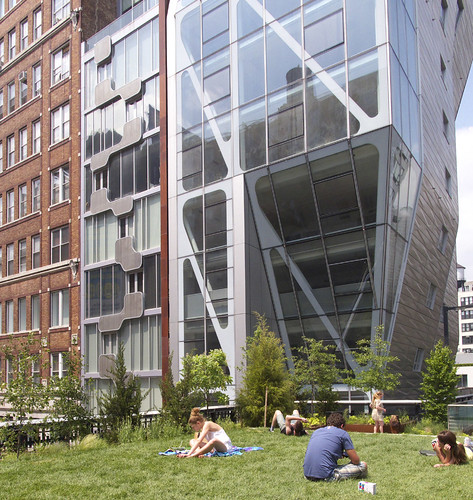
The lawn ascends as the paved walkway descends, so the lawn is more clearly separated in section at this northern end near HL23 (the building to the left of it is
High Line 519 by
Roy Design). A small plaza sits between the raised lawn and the balustrades and stairs near HL23. Denari's design, which angles out and above the High Line on the east side and angles back on its front face, is very strong and stands out along most of Section 2. Its presence is accentuated by the cantilevered stepping, its cladding, and the articulation of the glass which expresses the structure immediately behind it.

The above photo is looking north from just past HL23. Now is a good time to take a look at the building, because residents have not moved in (that I could tell); curtains and other means of creating privacy will surely make their way across the facade soon. This is a high-traffic part of the High Line, given the combination of the lawn and the steps from 23rd Street below, so many eyes will be looking up and in the building. It's clear to see why the elevation facing the High Line is so solid; the rippling stainless steel panels are an interesting way of giving scale and movement to the facade.

Continuing north, a grated ramp ascends to the appropriately named Woodland Flyover. Here the sensation will ultimately be like moving through "the shady canopy of a stand of sumac trees," but for now the vegetation is at or below eye height. Nevertheless the feeling is aided by being able to look down upon the groundcover and sitting on the benches that jut from the walkway on cantilevered outlooks.
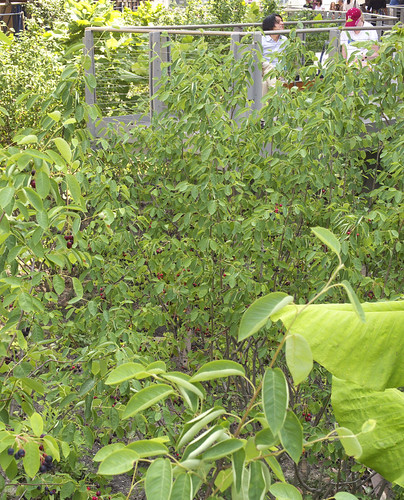
As can be seen above, from certain vantage points the landscape in the Woodland Flyover is quite dense, helping to create private moments on the outlooks.

Part of the Woodland Flyover extends between 25th and 26th Streets, a block occupied by large industrial buildings tight to the High Line. Here the sensation is like the buildings pinching the elevated park. I'm hoping these buildings stick around for a while, as they create a unique experience along the High Line, and they root the park in a deeper history, one linked to the rail viaduct's original purpose.
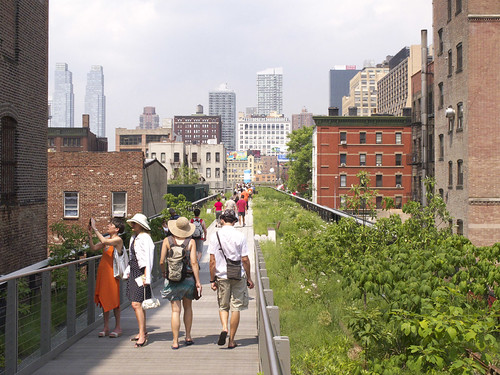
Descending from the Woodland Flyover, the path of the Wildflower Field is probably the straightest and most direct as anywhere in the park. After the pinch and the (not pictured) viewing gallery at 26th Street, the view to the north opens up as one approaches the Hudson Rail Yards.

The straight path starts to curve to the west at 29th Street. The curve is lined with continuous benches on the west side, where people can look east towards the old Post Office (future Moynihan Station) and north at an expansive skyline afforded by the Hudson Rail Yards. A couple temporary installations sit below the High Line at its 30th Street terminus: AOL Rainbow City's inflatable fun zone and
The Lot on Tap, a beer hall directly below the elevated park.

Just after the 30th Street Cut-Out (not pictured) is the abrupt end of Section 2. Chain link fencing gives a view of the third section of the High Line with its natural growth that had covered the rest of the elevated railway for years. Above is a spur that extends to the east to 10th Avenue. The
section of the High Line at the Hudson Rail Yards is not currently owned by the city and therefore is not secured for park use. Friends of the High Line is going through the motions to make this happen, but the best argument for extending the park is Section 2 itself. Traversing the park and ending up at 30th Street overlooking the disused rail viaduct, it's hard to imagine this last section as either something else or demolished. While these futures are probably less certain than a High Line future wrapping the Rail Yards to 34th Street, the uncertainly is unsettling.










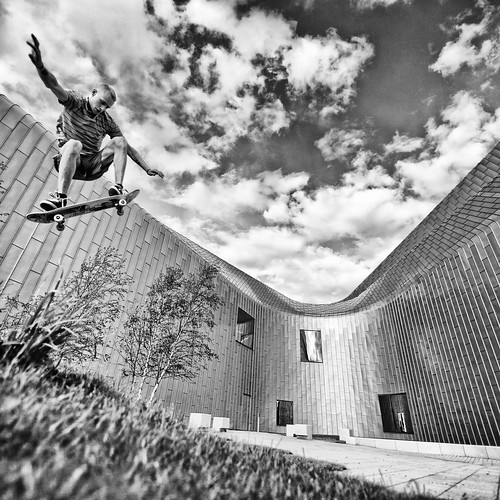

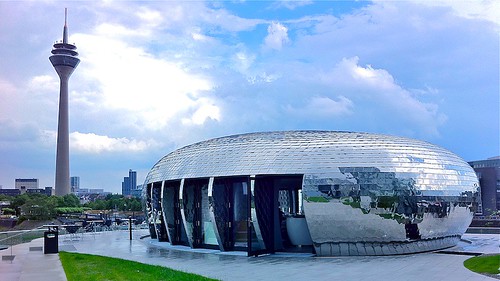
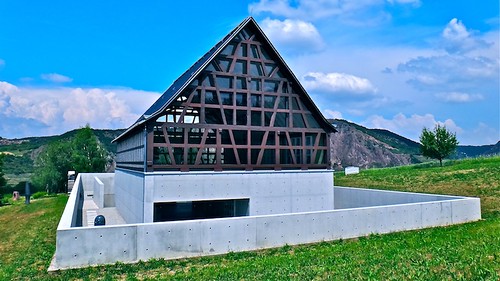
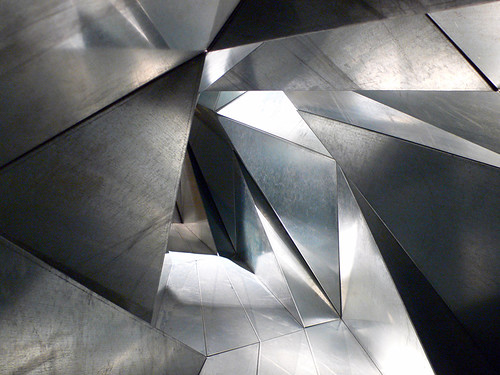


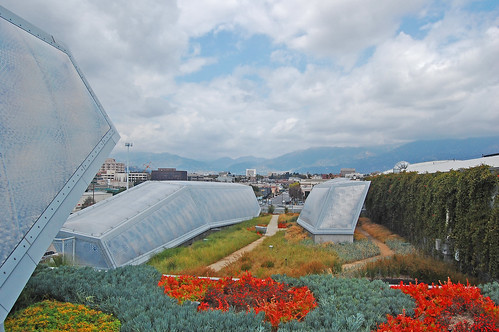
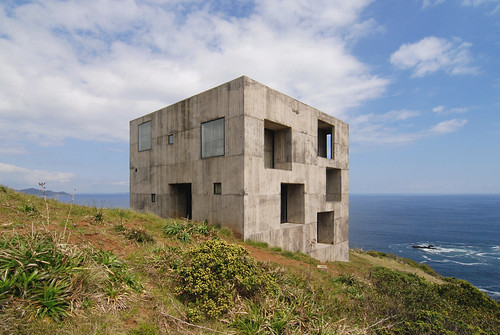






















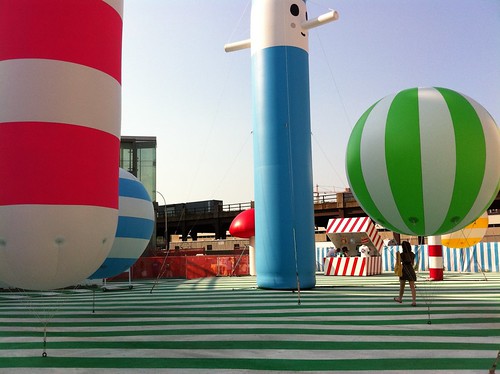




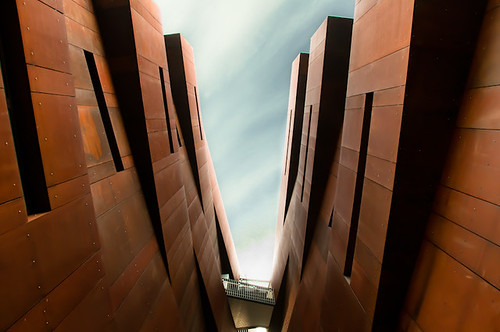




AOL's Rainbow City by FriendsWithYou, with a Pop Up Shop by HWKN, sits on West 30th Street next to the recently opened Section 2 of the High Line in New York City. It will be in place until July 5th.